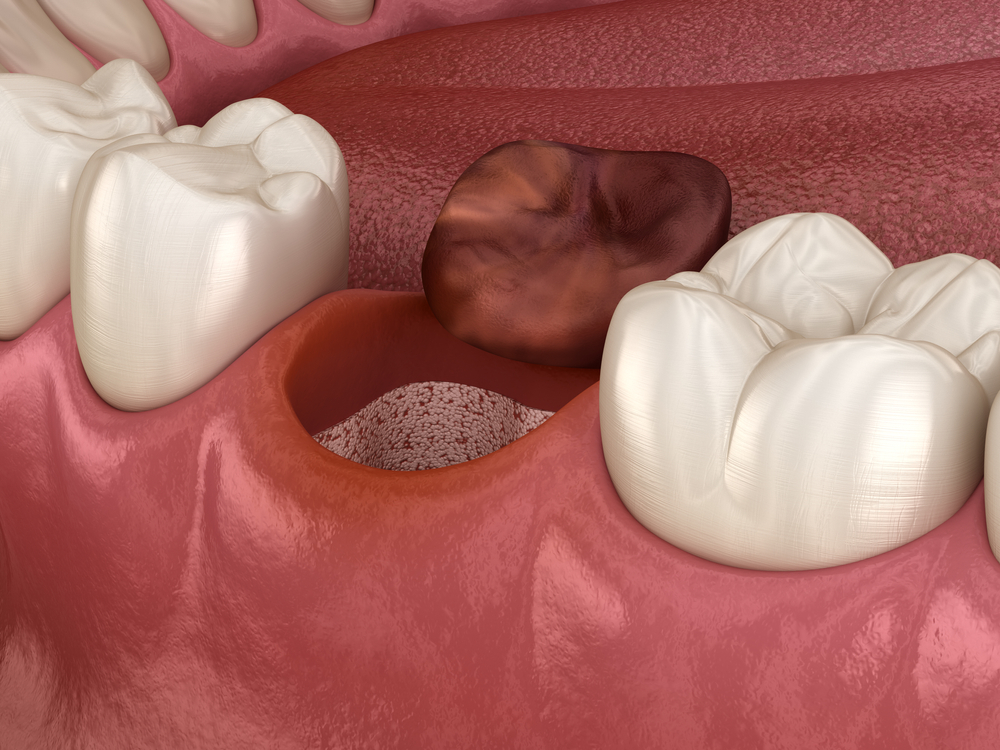
Dentleon İzmir Bornova, Çiğli, Güzelbahçe, Bayraklı Özel Diş Kliniği
What is Post-Tooth Extraction Inflammation (Alveolitis)?
31 July 2025

What is Post-Tooth Extraction Inflammation (Alveolitis)?
Post-tooth extraction inflammation, medically known as alveolitis , occurs when the expected blood clot at the extraction site either fails to form or dislodges prematurely. During normal healing, a blood clot forms in the space where the extracted tooth was located. This clot acts as a natural “protective membrane” that allows the wound to heal. However, if this clot disappears, bone tissue and nerve endings are exposed, which can lead to severe pain, bad breath, and infection.
Alveolitis usually appears 2-4 days after tooth extraction and manifests as progressively worsening pain. The pain often radiates to the jawbone and is not easily relieved by ordinary painkillers. The risk of developing alveolitis after the extraction of lower wisdom teeth is much higher than for other teeth. Factors that increase the risk of alveolitis include difficult extractions, smoking, poor oral hygiene, and hormonal changes (e.g., use of birth control pills).
What is the difference between Dry Socket and Alveolitis?
Dry socket, medically known as fibrinolytic alveolitis , is the most common form of alveolitis. Normally, a blood clot forms in the space left after a tooth extraction, and this clot is crucial for the healthy healing process. However, in some cases, this clot either fails to form or dislodges or dissolves prematurely, leaving bone and nerve endings exposed. This can lead to infection and severe, throbbing pain. A
dry socket usually doesn’t have any inflammatory discharge or swelling; pain is the most prominent symptom, usually beginning around 2-3 days after the extraction.
The term alveolitis is broader and encompasses inflammation associated with infection. In other words, all dry sockets are alveolitis, but not every alveolitis is a dry socket.
What Causes Alveolitis and When Does It Occur?
Many factors can play a role in the development of alveolitis. These include:
- Smoking : The chemicals in cigarettes negatively affect blood circulation, delay healing, and make it harder for a blood clot to stay in place. Furthermore, the first cigarette after extraction can dislodge the clot.
- Poor oral hygiene : Bacteria accumulated in the mouth can cause the clot to dissolve and an infection to develop.
- Excessive mouth rinsing or drinking through a straw : The resulting negative pressure may cause the clot to dislodge.
- Traumatic tooth extraction : Difficulty in extracting the tooth, excessive trauma to the surrounding tissues, increases the risk of alveolitis.
- Hormonal causes : In women, changing hormone levels during the menstrual cycle can make it difficult for the clot to remain stable.
- Past history of dry socket : The risk of recurrence increases in people who have had dry socket before.
Alveolitis usually appears 2 to 4 days after tooth extraction . The initial, normal healing process may be interrupted by sudden, severe pain a few days later. This pain is often resistant to painkillers and can radiate to the ear, jaw, or head.
What are the symptoms of dental alveolitis?
- Intense and throbbing pain at the extraction site
- Pain radiating to the ear, eye, or jaw
- Bad taste in the mouth and bad breath
- The empty tooth socket appears open and dry (no blood clot)
Preserving the clot is crucial to prevent infection after tooth extraction . Therefore, avoid spitting, rinsing your mouth, consuming hot foods and drinks, and smoking for the first 24 hours.
When alveolitis develops, a dentist should be consulted . The dentist can alleviate pain by cleaning the extraction site and applying an appropriate dressing. In some cases, antibiotic treatment may also be necessary.
How is Alveolitis Treated?
The goal of alveolitis treatment is to both relieve pain and promote healing by minimizing the risk of infection. This condition typically requires dental intervention and is treated with the following steps:
- Wound Cleaning:
The dentist first examines the extraction site and carefully removes any necrotic (dead) tissue, food debris, or infected clot residue. This cleaning process helps both reduce pain and promote healing. - Antiseptic Wash:
The extraction site is disinfected by rinsing it with a sterile solution (such as chlorhexidine or saline). This helps remove bacteria and prevent the spread of infection. - Medical Dressing (Medicated Packing):
The cleaned area is filled with a special dressing containing a painkiller and antiseptic. This dressing is usually changed every 24-48 hours and the process can be repeated until the patient finds relief. - Painkillers and Antibiotics:
Oral painkillers (paracetamol, ibuprofen, etc.) are prescribed for patients experiencing severe pain. If there’s a risk of the infection spreading or systemic symptoms (such as fever, swelling, or enlarged lymph nodes), the doctor may also prescribe antibiotics. - Extra Precautions and Follow-Up:
The patient is instructed to maintain good oral hygiene. Avoiding excessive mouthwash, smoking, and hard foods is recommended. Healing begins within a few days, but in some cases, it may take longer. If necessary, the doctor will monitor the progress with follow-up appointments. - Advanced Intervention (Rare Cases):
If the cavity does not heal properly, bone loss or serious infection occurs in the surrounding tissues, options such as advanced surgery or long-term implant treatment may also be considered.
How to Prevent Alveolitis (Inflammation After Tooth Extraction)?
To prevent infection after tooth extraction, it’s crucial to maintain good oral hygiene, take prescribed medications regularly, avoid smoking, and follow your dentist’s recommendations. Additionally, avoid spitting and drinking through a straw in the early post-extraction period. If the problem persists, gum treatment may be necessary.
Does Alveolitis Go Away on Its Own?
Some mild cases may resolve on their own, but they generally require treatment. Due to the severity of the pain, patients often require medical attention.
What Happens If Alveolitis Is Not Treated?
Untreated alveolitis can cause the infection to spread and become chronic. Pain persists for a long time and reduces quality of life.
How Many Days Does Alveolitis Last?
With proper treatment, alveolitis usually heals within 7-10 days. However, this period may be longer depending on the severity of the infection.
Recent Posts



